 OMD....is that a codpiece?You might think a swirly shaped codpieces is just another example of Over-indulgent Masculine Drivel in the Renaissance art scene.(what I refer to as OMD) But the backward curved shape was actually a protective talisman to ward off syphilis and prevent copulation. Guidobaldo's showy codpiece might be another example of fidelity. But faithful to whom? Yes, there is another love story here....
OMD....is that a codpiece?You might think a swirly shaped codpieces is just another example of Over-indulgent Masculine Drivel in the Renaissance art scene.(what I refer to as OMD) But the backward curved shape was actually a protective talisman to ward off syphilis and prevent copulation. Guidobaldo's showy codpiece might be another example of fidelity. But faithful to whom? Yes, there is another love story here.... Guidobaldo was an Italian Condottieri who became Duke of Urbino after his father, Francesco Maria's assasination in 1538 (shown right). At the time of his portrait, he had fallen in love with Clarice Orsini, the daughter of Gian Giordano Orsini and famed Renaissance beauty, Felice della Rovere. Unfortunately, the Orsini were mortal enemies of Guidobaldo's father, Francesco Maria and no priest or poison was ever going to allow these two crazy, Romeo and Juliet lovebirds to marry. Instead, Francesco Maria betrothed his son to the wealthy heiress, Giulia da Varano. A series of cantankerous letters between father and son ensued where Guidobaldo was told that he would obey or forfeit his inheritance.
Guidobaldo was an Italian Condottieri who became Duke of Urbino after his father, Francesco Maria's assasination in 1538 (shown right). At the time of his portrait, he had fallen in love with Clarice Orsini, the daughter of Gian Giordano Orsini and famed Renaissance beauty, Felice della Rovere. Unfortunately, the Orsini were mortal enemies of Guidobaldo's father, Francesco Maria and no priest or poison was ever going to allow these two crazy, Romeo and Juliet lovebirds to marry. Instead, Francesco Maria betrothed his son to the wealthy heiress, Giulia da Varano. A series of cantankerous letters between father and son ensued where Guidobaldo was told that he would obey or forfeit his inheritance.What would our red clad Lothario choose? Unfortunately, Guidobaldo had more to fear than just destitution. Francesco Maria was not a man you disobeyed unless you wanted to swim in the Tiber. He had killed a cardinal with his bare hands and worked hard to garner a reputation of utter ruthlessness.
.jpg)
Clarice's mother, Felice della Rovere put the brakes on the two lovers by whisking her daughter off to marry Don Luigi Carafa. Heartbroken, Guidobaldo acquiesced and married Giulia. To celebrate their wedding, he gave Giuila the portrait known today as Venus of Urbino by Titian. (He called it la donna nuda.) You might be thinking - ahhhh isn't that sweet. Hold that thought. The portrait was meant as an instructive model for Giulia on how to act like the correct Renaissance model/fertility goddess...but no pressure. Renaissance nudes were sometimes placed in the private chambers of nobles as ummm....inspiration. It was believed that looking at beautiful women would incite the couple's fertility.
We don't know the identity of this ideal Renaissance beauty. Possible suspects are one of Guidobaldo's mistresses (there were A LOT), Titian's mistress or even Guidobaldo's mother, Eleonora Gonzaga. Yes, that makes the gift even more creepy, but there is a startling resemblance.
Back to Guidobaldo's portrait....It was commissioned in 1532 by Angelo Bronzino to commemorate his eighteenth birthday. He places one hand on his helmet and the other on his dog possibly to indicate a successful future career as a soldier. The inscription on the helmet reads, "I will surely be true to the goal that I sang of." What exactly Guidobaldo was humming is left for the viewer to decide, but we can guess that it was not a love ballad to his family. The inscription is also in spitting distance to his swirly codpiece and some historians have theorized that its close proximity is symbolic of Guidobaldo sticking it to his dad.(1) Really? I don't know? If Guidobaldo really wanted to send a hostile message to his father, he could have written it on his codpiece. Then, there would be no confusion.*
But clearly, the ornery pooch represents serious daddy issues. That dog is definitely about to rip off your arm.
There is plenty more scandal around the della Rovere family and if you are interested in a really good read then I highly recommend The Pope's Daughter: The Extraordinary Life of Felice della Rovere by one of my favorite authors, Caroline Murphy (author of The Murder of a Medici Princess.
Notes:
*Yes, that was a joke. (1) Brock p. 49
Sources and Further Reading:
Brock, Maurice. Bronzino, New York, NY: Flammarion, 2002.
Murphy, Caroline. The Pope's Daughter: The Extraordinary Life of Felice della Rovere, Oxford University Press, USA, 2005.

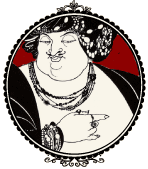


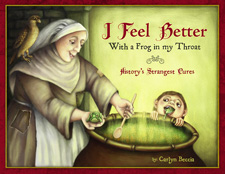
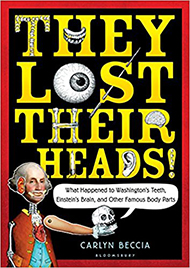


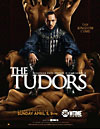

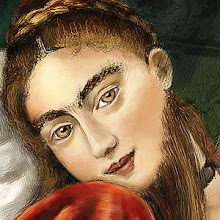













 - a bandaged codpiece?
- a bandaged codpiece?
